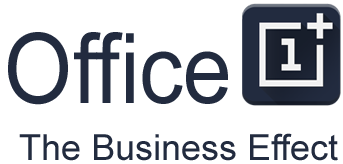Have you ever seen a danger sign that shows Free WiFi? Well, this is a reality in cybersecurity. Apple, BigFooty, Facebook, Google Cloud, Instagram, Microsoft, Nintendo, and government agencies among other big corporations have already been hacked. How much more can ordinary netizens protect their personal accounts?
In most cases, following online security practices can keep you safe. Some of these best measures are:
- Avoiding third-party applications.
- Changing your passwords regularly.
- Connecting to secured WiFi networks.
- Updating your device security system.
However, there may be times when we need to connect to public WiFi during travels or when we are outdoors. This is not exactly a good idea because of the risks of using public WiFi.
Distribution of Malware
Unlike home WiFi plans, most public WiFi doesn’t use encryption technologies to secure the connection. This is because it is very expensive to secure the network. As such, it unwittingly exposed the customer in harmful ways. If your device allows file sharing across a network, hackers can easily infect your device using malware. Malware or malicious software is extremely dangerous. They can compromise your online banking and even lock or wipe out your data away.
Exposure to Worm Attacks
Let’s say you have malware protection on your device. Then, you connect to the public WiFi of your favourite coffee shop. Other patrons may not have any type of malware protection. If their devices catch a worm, a stand-alone malware program, they can infect your device by jumping through the public WiFi connection. Typically, worms just slowdown your hardware. But if the worm carries a payload of codes, it makes you vulnerable to a large-scale virus attack.
Man-in-the-Middle (MitM) Attacks
Hackers can easily position themselves between a device and public WiFi. As such, they can eavesdrop and intercept data between two different parties. They can secretly alter content, corrupt your data, spy on you, and steal login credentials that put your online accounts at risk.
Password and username vulnerability
As mentioned, public WiFis don’t use encryption technologies like home WiFi plans. Through shoulder surfing, hackers can steal your email address and passwords as you share connections with them on the public WiFi network. With that information, they can request a lost password from the websites you visited and take advantage of them after hacking your account. Some use a type of Bcc to wait for opportunities they can use to their advantage.
Rogue access points and Wi-Fi networks
Hackers can easily install Rogue access points and WiFi networks on public WiFi areas. These are fake networks that can trick users. Once you connect to a Rogue WiFi network, the hacker who sets it up can harvest sensitive and valuable data on your device. They can use this data to take over your account to their advantage.
Sniffing, Snooping, and Spoofing
Sniffing is capturing data through an application that captures network packets. Snooping is intruding on the traffic between two networks, while spoofing means diverting internet traffic to a cloned site. These three are all types of hacking that can easily be done on unencrypted public WiFis. Hackers can harvest sensitive and valuable information in your system and use them for their benefit without your knowledge.
The Bottom Line
In general, the risk of using public WiFi comes with the threat of hackers positioning themselves between you and the connection point. The best way to protect you from this kind of cybersecurity issue is to connect to a trusted WiFi network. When we mean trusted, they should be password protected and securely encrypted. If unsure, it is best not to connect to unsecured networks. A good solution to have secured internet access wherever you go is by using mobile WiFi plans. You can properly configure them to your preferred safety and security standards. But if it’s already too late and your security has been compromised, here’s what you can do during a cyberattack in Australia.

